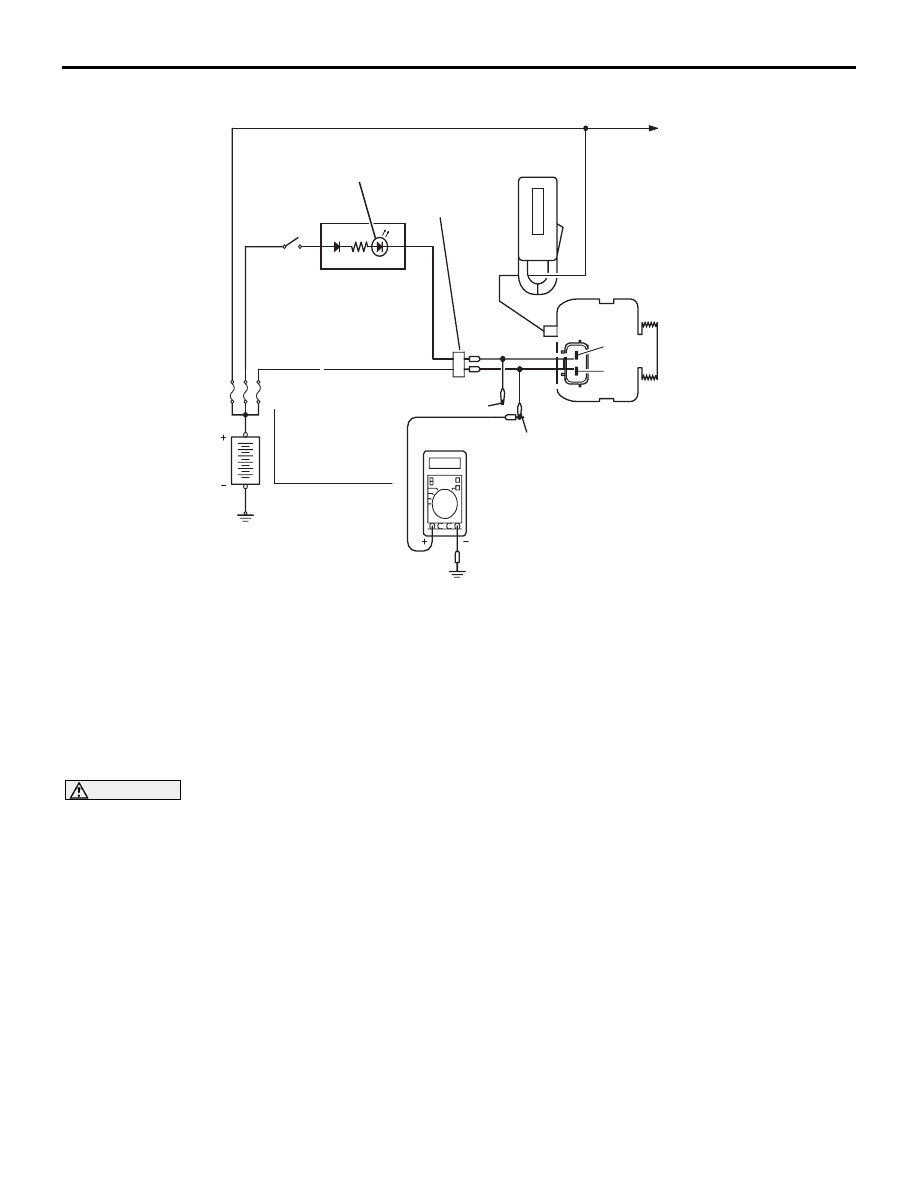Mitsubishi 380. Manual - part 247

CHARGING SYSTEM
ENGINE ELECTRICAL
16-10
REGULATED VOLTAGE TEST
M1161001100666
Required Special Tools:
• : Diagnostic Tool (MUT-III)
• MB991824: V.C.I.
• MB991827: MUT-III USB Cable
• MB991910: MUT-III Main Harness A
• MB998467: Alternator Harness Connector
This test determines whether the voltage regulator is
correctly controlling the alternator output voltage.
WARNING
Battery posts, terminals and related acces-
sories contain lead and lead compounds.
WASH HANDS AFTER HANDLING.
1. Always be sure to check the following before the
test:
• Alternator installation
• Check to be sure that the battery installed in the
vehicle is fully charged. (Refer to GROUP 54A,
Chassis Electrical
− Battery − On-vehicle Service
− Battery Check
• Alternator drive belt tension (Refer to GROUP 00,
General
− Maintenance Service − Drive Belts
(For Alternator, Power Steering Pump and Air
Conditioning) (Check)
• Fusible link
• Abnormal noise from the alternator while the
engine is running.
2. Turn the ignition switch to the "LOCK" (OFF)
position.
3. Disconnect the negative battery cable.
4. Use the special tool (Alternator harness
connector: MB998467) to connect a digital-type
voltmeter between the alternator "S" terminal and
ground. (Connect the positive lead of the
voltmeter to the "S" terminal, and then connect the
negative lead of the voltmeter to a secure ground
or to the negative battery terminal.)
5. Connect a clamp-type DC test ammeter with a
range of 0
− 120 A to the alternator "B" terminal
output wire.
6. Reconnect the negative battery cable.
7. Connect an engine tachometer, or diagnostic tool.
8. Turn the ignition switch to the "ON" position and
check that the reading on the voltmeter is equal to
the battery positive voltage.
NOTE: If the voltage is 0 V, the cause is probably
an open circuit in the wire or fusible link between
the alternator "S" terminal and the battery positive
terminal or malfunctioning voltmeter.
9. Check to be sure that all lights and accessories
are off.
10.Start the engine.
06DB025A
BATTERY
IGNITION
SWITCH
AMMETER
(CLAMP-TYPE)
LOAD
MB998467
VOLTMETER (DIGITAL-TYPE)
RED
YELLOW
ALTERNATOR
B
ALTERNATOR
MALFUNCTION
LIGHT
COMBINATION
METER
L
S